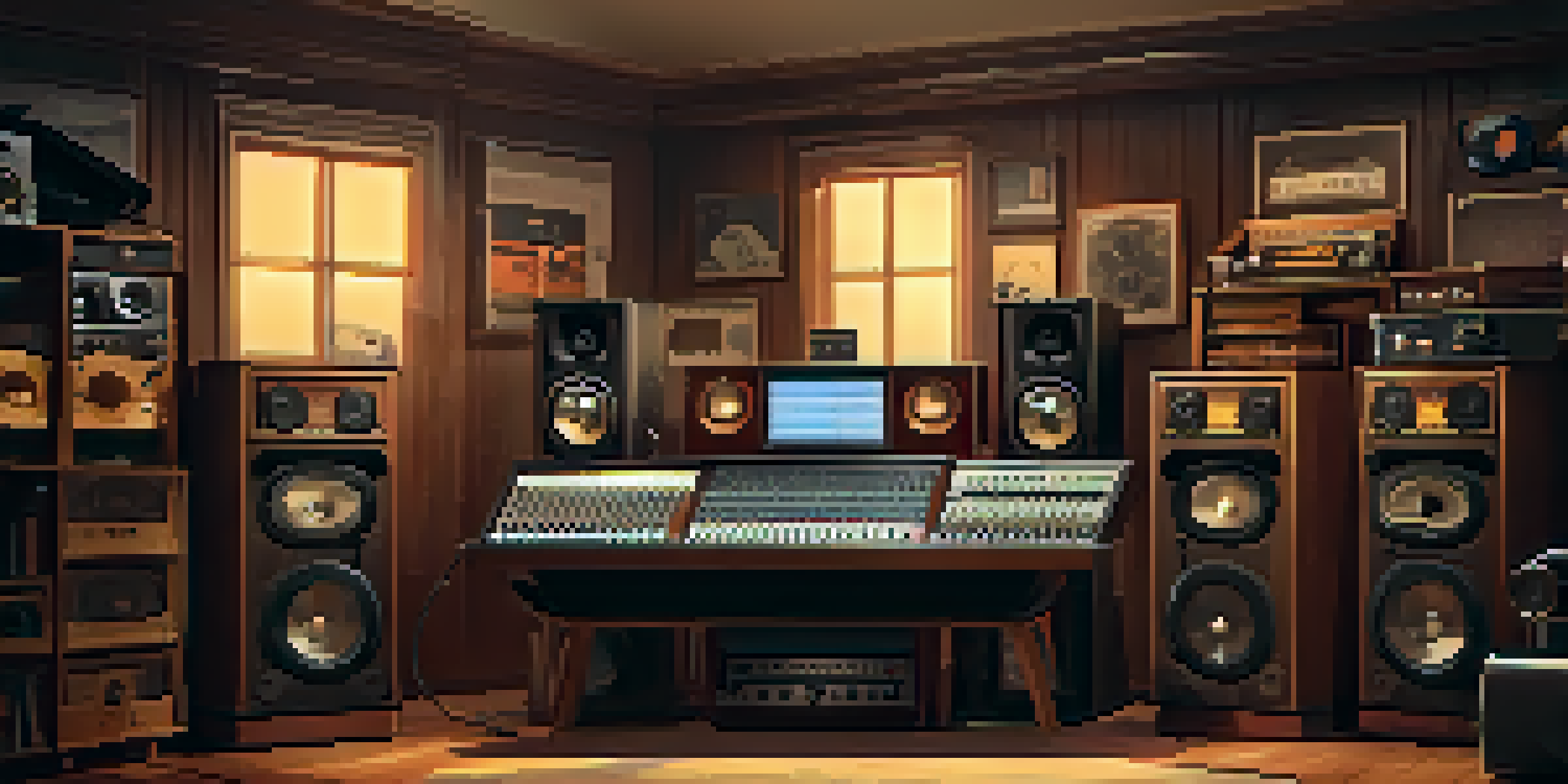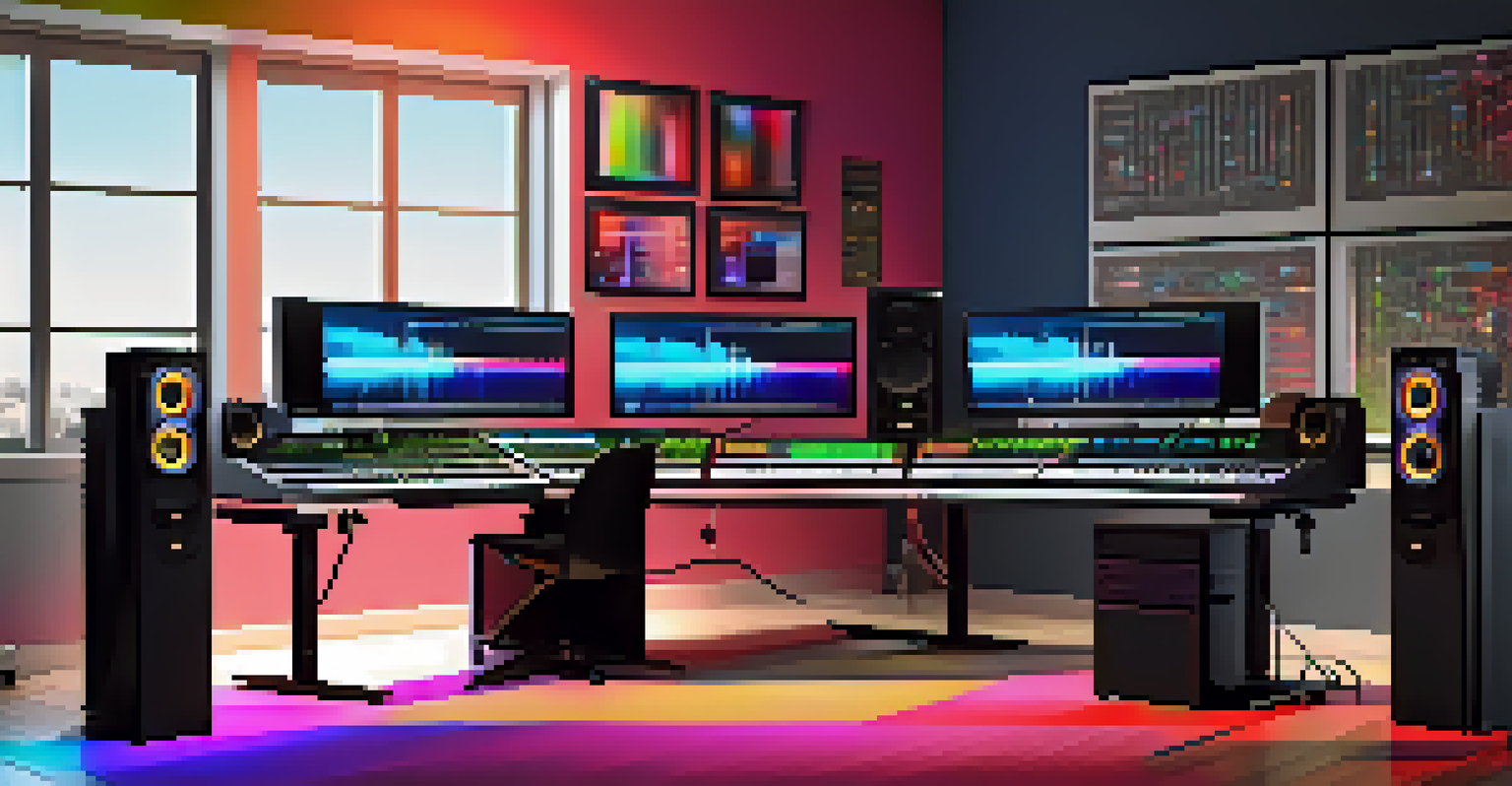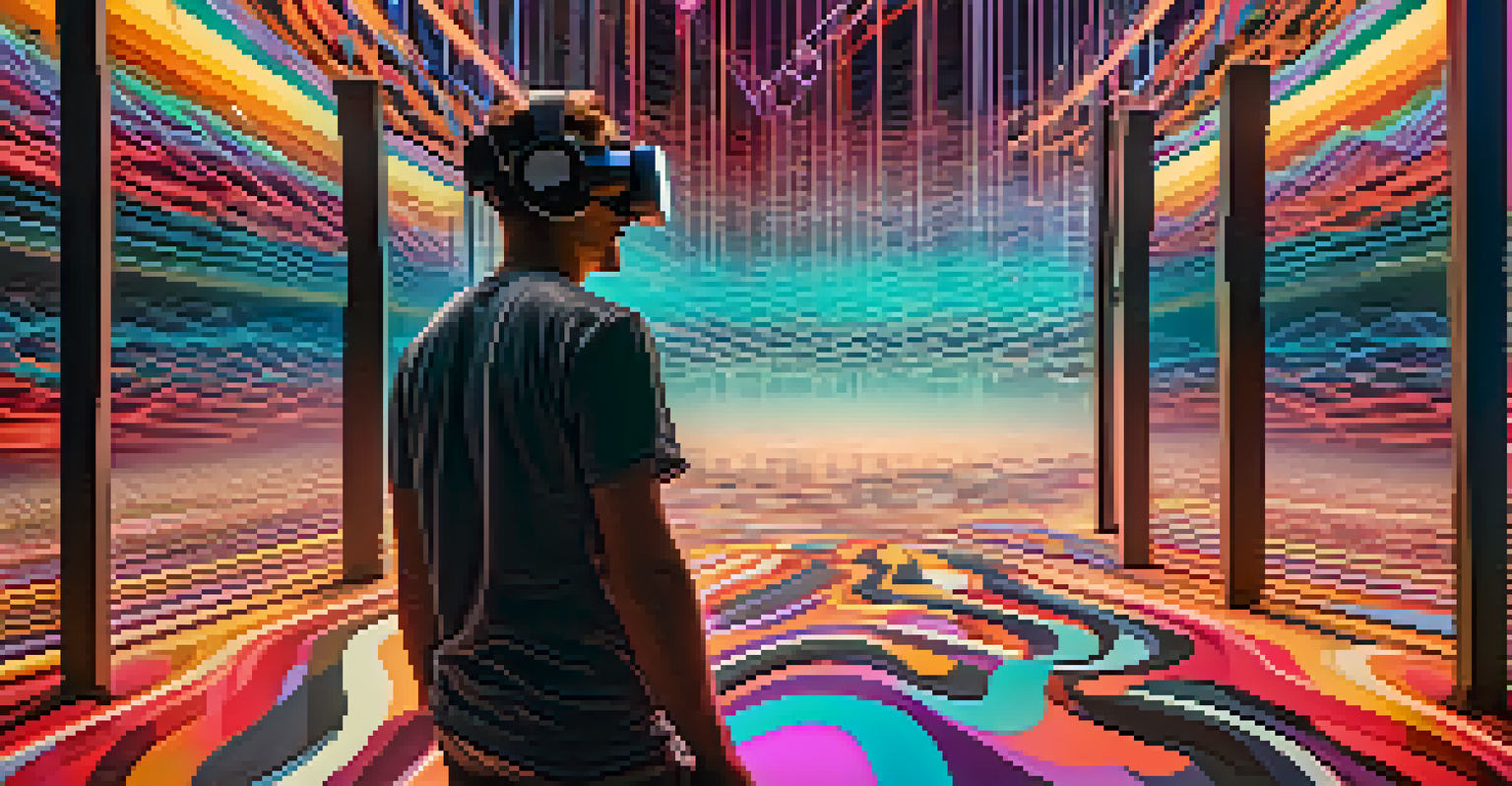The Evolution of Sound Design with Digital Technology Advances

The Roots of Sound Design: A Historical Perspective
Sound design has a rich history that dates back to the early days of cinema and radio. Initially, sound was created using analog equipment, which required significant manual effort and expertise. This laid the groundwork for what would eventually evolve into today's sophisticated sound design practices.
Sound is the vocabulary of the imagination.
As technology progressed, so did the methods of sound capturing and manipulation. The introduction of magnetic tape in the 1940s marked a significant leap, allowing sound designers greater flexibility and control over their work. This innovation opened doors to new creative possibilities, setting the stage for future advancements.
With the emergence of digital technology in the 1980s, sound design began to undergo a dramatic transformation. Digital audio workstations (DAWs) became a game-changer, enabling sound designers to edit, mix, and create soundscapes with unprecedented precision and ease.
The Impact of Digital Audio Workstations (DAWs)
Digital Audio Workstations revolutionized sound design by providing a platform for comprehensive audio manipulation. Software like Pro Tools and Logic Pro allows users to record, edit, and mix sound all in one place, making the process more efficient. This accessibility has democratized sound design, making it possible for aspiring artists to create high-quality audio from their home studios.

Moreover, DAWs come equipped with a wealth of virtual instruments and plugins that expand creative horizons. Sound designers can now experiment with a plethora of sounds, from realistic instrument emulations to entirely synthesized noises. This versatility encourages innovation and artistic expression in ways that were previously unimaginable.
Evolution of Sound Design Tools
The transition from analog to digital tools, particularly the advent of DAWs, has revolutionized sound design, making it more accessible and versatile for creators.
The integration of MIDI technology within DAWs further enhances sound design capabilities. By allowing composers to control virtual instruments using digital signals, sound designers can create intricate compositions that blend various sound elements seamlessly.
The Rise of Sampling and Looping Techniques
Sampling has become a fundamental aspect of modern sound design, allowing designers to incorporate snippets of existing audio into their projects. This technique can range from using short musical phrases to full phrases, enabling the creation of new and exciting soundscapes. The ability to manipulate samples has led to a fusion of genres and styles, pushing the boundaries of creativity.
The music is not in the notes, but in the silence between.
Looping, closely tied to sampling, allows sound designers to create repetitive musical phrases that can form the backbone of a track. With just a few clicks, designers can construct intricate rhythms or melodies that are both captivating and immersive. This approach not only saves time but also encourages experimentation with different audio textures.
The proliferation of sample libraries and online platforms has made it easier than ever for sound designers to access high-quality samples. This wealth of resources encourages collaboration and innovation, helping artists blend diverse influences into their work.
Advancements in Sound Synthesis Techniques
Sound synthesis is another cornerstone of modern sound design, allowing creators to generate sounds from scratch. Techniques like subtractive, additive, and granular synthesis offer sound designers a range of possibilities for crafting unique audio experiences. Each method provides a different approach to sound creation, fostering individuality in the design process.
The advent of software synthesizers has further expanded the landscape of sound design. These virtual instruments emulate traditional hardware synthesizers while adding features that enhance usability and flexibility. This means sound designers can explore a variety of sonic textures without the physical constraints of analog equipment.
Sampling and Looping Techniques Rise
Modern sound design heavily relies on sampling and looping techniques that allow for innovative soundscapes and genre fusions, enhancing creative expression.
As technology continues to evolve, the integration of artificial intelligence (AI) in sound synthesis is on the rise. AI-powered tools analyze existing sounds and generate new ones, offering sound designers a fresh perspective and innovative options for their projects.
The Role of Sound Design in Film and Video Games
Sound design plays a pivotal role in enhancing storytelling in both film and video games. It creates emotional depth, establishes atmosphere, and guides audience engagement. The ability to manipulate sound effectively can turn a simple scene into a powerful narrative experience.
In film, sound designers work closely with directors to ensure that audio complements the visuals seamlessly. This collaboration can involve creating soundscapes that enhance the mood or crafting sound effects that heighten tension. The result is an immersive experience that captivates viewers and enriches the story.
In video games, sound design is equally crucial, as it contributes to player immersion and interaction. Dynamic soundscapes that respond to player actions help create a more engaging experience. As gaming technology advances, the potential for innovative sound design continues to grow, promising exciting developments for the future.
Emerging Trends in Sound Design Technology
As digital technology continues to advance, new trends in sound design are emerging. One notable trend is the increasing use of spatial audio, which creates a three-dimensional sound experience. This technology enhances the way audiences perceive sound, making it feel as though it’s coming from various directions, adding depth to the listening experience.
Virtual reality (VR) and augmented reality (AR) also influence sound design significantly. Designers must create audio that adapts to the user's perspective in these immersive environments. This challenge pushes sound designers to innovate and think outside the box, crafting unique audio experiences that complement visual elements.
Future Trends in Sound Technology
Emerging trends like spatial audio, VR, and mobile applications are shaping the future of sound design, offering new possibilities for immersive audio experiences.
Moreover, the rise of mobile applications for sound design is making the craft more accessible. Users can create and manipulate sound on-the-go, enabling creativity beyond traditional studio settings. This accessibility is likely to foster a new generation of sound designers eager to explore the possibilities of audio.
The Future of Sound Design: Where Are We Headed?
Looking ahead, the future of sound design appears bright and full of potential. With constant technological advancements, sound designers will have access to even more sophisticated tools and techniques. This evolution promises to enhance creativity and open doors to new forms of audio expression.
As interdisciplinary collaborations become more common, sound designers will increasingly work alongside artists from various fields. This fusion of expertise can result in groundbreaking projects that push the boundaries of what sound can achieve. The interplay between sound design, technology, and other art forms will continue to evolve, shaping the future landscape.

Ultimately, the evolution of sound design is a testament to human creativity and innovation. As we embrace new technologies and explore uncharted territory, the possibilities for sound design are limitless, ensuring its vital role in art, entertainment, and communication for years to come.